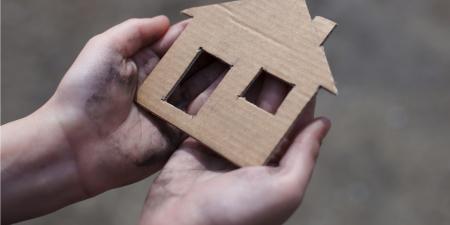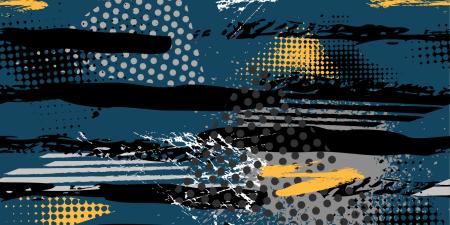Samuel never had a life of comfort. When I began working at Christ House, a medical shelter for the homeless of Washington D.C., Samuel had been living there for more than a month. He had terminal throat and tongue cancer [1]. As a nursing assistant, one of my duties was to help Samuel organize his cubby and bed, which included discarding countless coffee cups, packets of sugar, and tissues containing phlegm and blood. While Samuel couldn't speak, we communicated using scribbled notes and sign language unrecognized by anyone but the two of us. He was a man who struggled with an incurable disease and a society that did not readily accept his acerbic personality and often hostile disposition. Yet, it was clear that the nurses and doctors who treated him understood his vulnerability and cared for him--giving him pain medicine, tolerating his antics, and smiling when tears welled in his eyes after he was given a scarf and gloves for Christmas. Samuel died at 58 years of age on a January morning after being transferred to Joseph's House, a local hospice for homeless men [2]. The story of Samuel's life highlights a question that I have long struggled to answer--how can medical professionals best serve the homeless, a community which in my opinion, has been historically neglected.
Following de-institutionalization of many mental health institutions in the 1980s, homeless men and women who were mentally ill were discharged to the streets with limited financial resources and social connections. At the same time, social services working with low-income communities were already burdened with high case loads and put together a patchwork of programs that never adequately met the needs of this newly homeless population. Welfare reform under the Clinton Administration and a Republican congress led to even fewer resources for low-income individuals. The current financial recession--with more than 10.3 million unemployed nationwide, 30 million receiving food stamps, and one in every 488 houses being foreclosed nationally--has blindsided many moderate- to low-income families and left them at risk of losing both their livelihoods and homes [3, 4]. The threat of homelessness may be frighteningly real to more people in these uncertain financial times. The articles in this issue examine themes that will always challenge our understanding of and compassion for those at the margins of society.
It is difficult to estimate the number of homeless people in the United States; between 2.3 and 3.5 million individuals, 1.35 million of them children, are likely to experience homelessness in a given year [5]. A 2007 study found that, among the sheltered homeless, 25 percent were disabled and nearly 20 percent were veterans. While most of the homeless were single adults, it is notable that more than 22 percent were under 18 years of age [6]. The homeless are more likely than the general population to be diagnosed with obstructive lung disease, hepatic diseases, skin and orthopedic problems, and infectious diseases including tuberculosis and HIV [7, 8]. It is not surprising that this population is more inclined to suffer from chronic physical and mental illnesses than the general population and have shortened life spans associated with the lack of adequate housing and nourishment.
Despite declines in many social services otherwise available to homeless men and women, a number of physicians have stepped up to provide health care. Whether working in the emergency room, establishing respite care facilities and hospices, or teaming up with social workers in an outpatient clinic, physicians and medical students alike are learning the challenges that their homeless patients face on a daily basis. Serving as a healer requires more than simply treating the medical symptoms of a patient whose economic situation is more precarious than one's own. It demands an understanding and appreciation of the full needs of patients whose illnesses are complicated by layers of family fragmentation, social disengagement, and loss. A disease that one might consider manageable, such as diabetes, is complicated by the fact that shelters may not allow clients to bring in needles and may not have proper storage facilities for insulin. HIV patients required to take several medicines to combat their illness may struggle to do so when they don't know where they will sleep any given night. As a result, some go to emergency rooms or crowded outpatient clinics for primary care.
The cases, commentaries, and personal accounts in this issue of Virtual Mentor address patient autonomy, beneficence, and physician responsibility. Contributors include physicians, educators, public health officials, as well as graduate and law students. Each author describes his or her unique perspective on the issues that physicians face, whether debating the role a physician has in caring for a homeless mother and her child, talking with a patient who is malingering in the emergency room, or contemplating whether a schizophrenic patient should be reported for lack of compliance to an outpatient treatment program. Authors also discuss the singular needs of homeless veterans, the treatment decisions of homeless patients, academic programs that introduce medical students to providing care for homeless patients, and the treatment of homeless individuals who volunteer as research subjects. Personal accounts among seasoned advocates focus on those who are chronically homeless and those who have become homeless as a result of a natural disaster.
Together, the articles describe the current ethical challenges that both patients and physicians face and offer solutions that balance providing care for homeless patients with financial and social consequences of doing so. This month's authors share a passionate concern for the homeless community; I am grateful for their insight and guidance.
References
-
Christ House. 2007. http://www.christhouse.org. Accessed December 2, 2008.
-
Hilfiker D. Not All of Us Are Saints. New York, NY: Hill and Wang; 1994.
-
U.S. Department of Labor Bureau of Labor Statistics. The unemployment situation: November 2008. http://www.bls.gov/news.release/empsit.nr0.htm. Accessed December 8, 2008.
-
The Henry H. Kaiser Family Foundation. Measures of state economic distress: housing foreclosures and changes in unemployment and food stamp participation. 2008. http://www.statehealthfacts.org/comparetable.jsp?ind=649&cat=1. Accessed December 1, 2008.
-
National Law Center on Homelessness & Poverty. 2007 annual report. http://www.nlchp.org/content/pubs/2007_Annual_Report2.pdf. Accessed December 17, 2008.
-
U.S. Department of Housing and Urban Development Office of Community Planning and Development. The annual homeless assessment report to congress. 2007. http://www.huduser.org/Publications/pdf/ahar.pdf. Accessed December 1, 2008.
-
Goldstein G, Luther JF, Jacoby AM, Haas GL, Gordon AJ. A taxonomy of medical comorbidity for veterans who are homeless. J Health Care Poor Underserved. 2008;19(3):991-1005. O'Connell J. The Health Care of Homeless Persons: A Manual of Communicable Diseases & Common Problems in Shelters & on the Streets. 2004. The Boston Health Care for the Homeless Program with The National Health Care for the Homeless Council. http://www.bhchp.org/BHCHP%20Manual/index.html. Accessed November 29, 2008.



